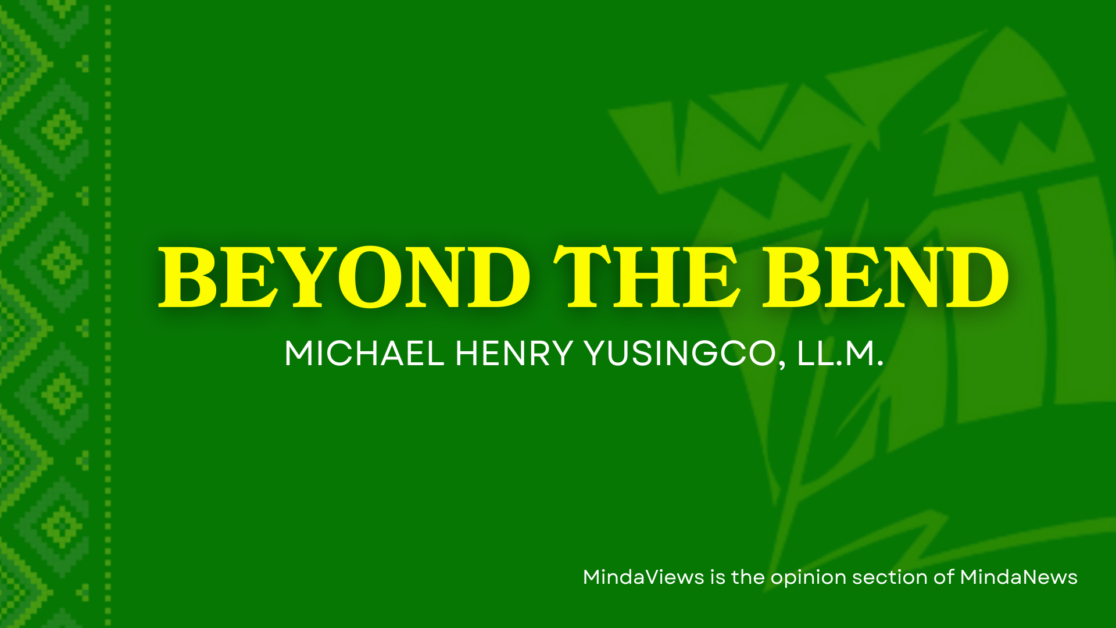
MELBOURNE, Australia (MindaNews / 15 July)—According to the Official Gazette website, the State of the Nation Address or SONA is the once-a-year event when our President faces a joint session of Congress. Notably, the SONA is one of only four instances where the 1987 Constitution requires a joint session of Congress.
The other three being, (1) to declare the existence of a state of war, (2) the canvassing of votes after a presidential election, and (3) to revoke or extend of the declaration of martial law and/or the suspension of the writ of habeas corpus.
First and foremost, the SONA is a constitutional obligation of the President as per Article VII, Section 23 of the 1987 Constitution, to wit: “The President shall address the Congress at the opening of its regular session.” And Article VI, Section 15 prescribes that the Congress “shall convene once every year on the fourth Monday of July for its regular session.”
Obviously, the intended audience of the SONA is Congress, even though the general public will inevitably hear it as well. Hence, the Constitution never intended the SONA to be a President’s platform for “making papogi.”
Moreover, the SONA is not a presidential “performance report.” The fact is, the President is expected to report to public on a regular basis. We must actually demand performance assessments as often as possible to keep the President and his administration on their toes.
The SONA’s purpose is clear and that is to be the stage for the President to address both the Senate and the House of Representatives. By constitutional design, the executive and legislative branches of government are autonomous in their respective spheres. The SONA is that rare moment where they can officially convey to the people that they can cooperate and coordinate with one another towards a common goal.
So, what should the SONA contain, then? It must be emphasized that this address is primarily for the ears of lawmakers. The theme therefore must always be a call to action. Again, this should not be used by the President as a chance to do a “victory lap,” as some of his allies are suggesting. To do so simply cheapens the SONA.
The President should be able to explain to Congress the extent of the intergenerational problems that we need to overcome. Obviously, there is no expectation to deliver a highly detailed presentation. But certainly, the President must offer an honest-to-goodness account of what ails the country.
More importantly, the SONA should also present measures that address the problems that were identified by the President. But simply enumerating a “to-do-list” will not be enough. But neither is just cramming the SONA with promises and aspirations.
The expectation is for the President to outline a responsive cooperative partnership agenda for the year to come. Therefore, the SONA should also include a strong directive for Congress to enact specific measures that either complement or implement the President’s action plan.
Admittedly, the SONA has been used as an occasion for political posturing. In truth, the political aspect of this tradition cannot be avoided. Nonetheless, the address itself cannot simply be valued for its beneficial impact to the President’s popularity and his administration’s trust-rating. The SONA, regardless of the political context, must still be a clear and coherent guide for both the executive and legislative branches of government.
Consequently, the public must demand for direction as to how the Marcos administration intends to deal with the education crisis, food insecurity, and maritime security. At the very least, the coming SONA must offer a broad and sensible response to these most urgent issues. Hopefully, this is the one where the President forsakes the whack-a-mole approach that populists are fond to employ.
But the problem with President Marcos is that he cannot seem to shake-off being in campaign mode. He and his team are still aiming to project care and concern for the people through various high visibility sorties. They may still use the SONA as if this was a political rally, which is truly a disservice to the polity.
The President is certainly active and very involved in governance but it should not be just about putting out fires as they arise. Filipinos need to realize this. They should worry that at the midway point of President Marcos’ term, his administration has yet to present a convincing and comprehensive path forward.
“Bagong Pilipinas” is still more a slogan than a roadmap towards improving the state of the nation. Hopefully, such crude political branding will not be the be-all and end-all of President Marcos’ third SONA.
(MindaViews is the opinion section of MindaNews. Michael Henry Yusingco, LL.M is a law lecturer, policy analyst and constitutionalist.)
0 Comments